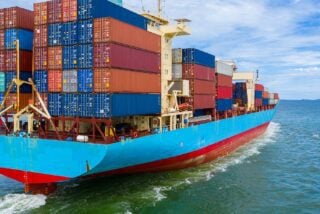
The health impacts of asbestos usage have been documented since the 1920s. Despite this knowledge, production and exportation continue in many countries around the world. Although more than 60 countries have banned asbestos, regulations and consumption vary greatly worldwide. For instance, the United States no longer manufactures the dangerous mineral. However, the United States continues to import the mineral and allows the inclusion of small asbestos amounts in certain products.
The National Minerals Information Center (part of the United States Geological Survey, or USGS) releases an annual domestic and global asbestos consumption trends report. In recent years, global production and usage have been trending downward. However, for some countries, production is still underway and growing. These reports illustrate the work ahead to achieve a global asbestos ban.
United States’ Asbestos Consumption Declines
Asbestos was used in the United States for a number of important industries, including transportation, shipbuilding, utilities and construction. Asbestos consumption in the United States peaked at 803,000 tons in 1973. However, usage and manufacturing began to decline in the mid-1970s with changing regulations and rising awareness of associated health issues.
The last asbestos mine in the United States. closed in 2002. Since then, all asbestos used in the United States is imported, largely from Russia and Brazil. Consumption followed a steady downward trend, with minor fluctuations between 2013 and 2018.
United States’ Asbestos Consumption Trends 2013-2019:
- 2013: 772 tons
- 2014: 406 tons
- 2015: 325 tons
- 2016: 747 tons
- 2017: 332 tons
- 2018: 750 tons
- 2019: 100 tons
The latest USGS report shows 100 tons of asbestos were imported and consumed in the United States in 2019. All of this asbestos was shipped from Russia, which remains a top worldwide producer of the mineral.
According to the USGS report, the chlor-alkali industry used 100% of the asbestos imported in 2019. The chlor-alkali process produces chlorine, sodium hydroxide and hydrogen. These products are essential for chemical processing, industrial settings and even household cleaning supplies. In the chlor-alkali industry, a semipermeable membrane is used to prevent chemical reactions between chlorine and sodium hydroxide. These membranes often include asbestos, though alternative materials exist.
The report also noted asbestos use in the United States is not limited to raw imported asbestos. The mineral is also present as an ingredient in imported products, such as chemical containment seal gaskets, oil industry brake blocks and vehicle friction products.
These uses of asbestos still pose health threats, even in small amounts. Though the report confirms usage decreased in 2019, the trends from 2013 to 2018 show fluctuations in usage are common.
Additionally, exposure to historic asbestos is still frequent. Exposure to asbestos can be impacted by changing regulations. One of the latest legislation changes introduced by the Environmental Protection Agency (EPA) may even allow asbestos back into production in new applications.
The EPA passed a Significant New Use Rule (SNUR) in June 2019. This plan prohibits asbestos in discontinued uses unless reapproved by the EPA. If approved by the EPA, asbestos would be allowed back into previously discontinued products. Advocates have argued the loopholes in this rule highlight the need for a full asbestos ban in the United States.
Global Asbestos Consumption
More than 60 countries have full asbestos bans, including Australia and the United Kingdom. In other countries, asbestos is still mined and produced.
Worldwide asbestos production totaled 1.1 million tons in 2019. Russia, Kazakhstan and China were the top producers. Russia alone produced 750,000 tons of asbestos. This marked a 40,000-ton increase over 2018 production, which may be due to former top producers ceasing asbestos production.
In recent years, former top asbestos producers Brazil and Canada have enacted asbestos bans:
- Canada restricted asbestos use in October 2018, with exceptions for the military, nuclear facilities and the chlor-alkali industry. Canada had been one of the world’s top five producers of asbestos until ceasing production in 2011.
- Brazil was also a top producer of asbestos that later regulated the mineral. The country banned asbestos in November 2017. However, the country still produced 110,000 tons in 2018 and 15,000 tons in 2019. The last remaining asbestos producer in Brazil was suspended in February 2019, but appealed the decision to the Supreme Federal Court.
Despite these two top producers banning asbestos, many other countries still produce, import and export the mineral. Since 2015, overall global asbestos production has decreased by only 900,000 tons.
However, any asbestos production still poses a public health risk. The long latency period of asbestos diseases like mesothelioma presents another obstacle for decreasing the prevalence of these diseases. For instance, in Italy, mesothelioma rates are still high around areas of asbestos exposure, despite a ban in 1993. Delaying asbestos bans or stricter regulations puts more people at risk of exposure.
In order to decrease asbestos-related disease rates and prevent exposure, advocates lobby for a worldwide ban on the mineral. A recent study from researchers at China Medical University examined the practice of banning asbestos and its efficacy. The study concluded national bans must be supplemented with international agreements to ultimately see a decrease in asbestos disease incidence.
Collective international action may be the most effective way to decrease asbestos production and protect citizen health.




